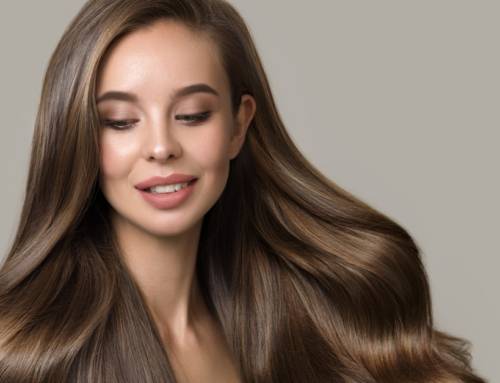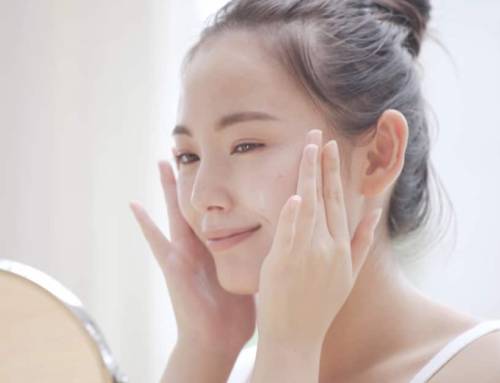California’s New Toxic-Free Cosmetics Act
OCTOBER 22, 2020

The new Toxic-Free Cosmetics Act makes California the first state in the United States to enforce a state-level ban of 24 different ingredients from beauty, skincare, and personal care products.
The Toxic-Free Cosmetics Act
Beginning on January 1, 2025, the new Toxic-Free Cosmetics Act will prohibit “a person or entity from manufacturing, selling, delivering, holding, or offering for sale, any cosmetic product that contains any of several specified intentionally added ingredients, except under specified circumstances” in the state of California.
The banned ingredients include:
- Dibutyl phthalate
- Diethylhexyl phthalate
- Formaldehyde
- Paraformaldehyde
- Methylene glycol
- Quaternium-15
- Mercury
- Isobutylparaben
- Isopropylparaben
- m-Phenylenediamine and its salts
- o-Phenylenediamine and its salts
- Multiple per- and polyfluoroalkyl substances (PFAS) and their salts
However, the new Toxic-Free Cosmetics Act includes an exemption “if a cosmetic product made through manufacturing processes intended to comply with this chapter contains a technically unavoidable trace quantity of an ingredient listed in subdivision and that trace quantity stems from impurities of natural or synthetic ingredients, the manufacturing process, storage, or migration from packaging, that trace quantity shall not cause the cosmetic product to be in violation of this section.”
Background on the Act
The Toxic-Free Cosmetics Act was authored by state Assembly members Al Muratsuchi, Buffy Wicks, and Bill Quirk.
The bill was also co-sponsored by CALPIRG, Environmental Working Group, Breast Cancer Prevention Partners, and Black Women for Wellness.
The Toxic-Free Cosmetics Act passed the California State Assembly with a bipartisan 59-0 vote, before heading to Governor Newson.
California is the first state to ban 24 ingredients in cosmetics
“Every day, Californians are exposed to hazardous chemicals hiding in their cosmetics and personal care products. Children, communities of color and pregnant women are especially vulnerable to these ingredients, which are not actively regulated by the federal government. California is leading the nation by banning toxic ingredients from our cosmetics. This legislation will save lives and keep Californians and our environment safe,” according to an official statement by Governor Newsom.
Similarities to the European Union
Many of the ingredients to be banned under the California Toxic-Free Cosmetics Act are currently banned in the European Union, under the EU Annex II of regulation No. 1223/2009.
However, experts note that some of the ingredients in the California-level ban, like mercury, are rarely used in formulations anymore.
"This legislation will save lives and keep Californians and our environment safe."
California Governor Gavin Newsom
“Dibutyl phthalate, for example, is used to make plastics soft and flexible, such as shower curtains, raincoats, food wraps, bowls, and many other consumer products,” David Petrillo, cosmetic chemist and founder of Perfect Image Skincare, told Allure. “They historically were used in nail polishes as a plasticizer to reduce cracking and make them less brittle, but most cosmetics and personal care manufacturers have already discontinued using them in manufacturing.”
Formaldehyde focus
Perhaps the most notable banned ingredient in the Toxic-Free Cosmetics Act is formaldehyde.
Formaldehyde is found in a multitude of hair straightening products including the Brazillian Blowout, keratin treatments, conditioners, sprays and more.
Formaldehyde has recently come under intense governmental agency scrutiny and consumer fire for associated health risks.
"Formaldehyde is a colorless, strong-smelling gas that presents a health hazard."
-U.S. Food and Drug Adminstration
“Hair smoothing products often contain formaldehyde, also known as formalin and methylene glycol. When the solution is heated, the formaldehyde in the products is released into the air as a gas. If the salon is not properly ventilated, both the salon professionals and their clients are at risk of inhaling the released formaldehyde,” according to the U.S. Food and Drug Administration. “Formaldehyde is a colorless, strong-smelling gas that presents a health hazard when breathed into the lungs, or when it gets into the eyes or onto the skin.”
Formaldehyde is classified as a human carcinogen by the International Agency for Research on Cancer because at high levels or prolonged exposure it has been linked to certain types of cancers.
Moving ahead
Without a FDA-regulated definition of what the label “toxic” means for cosmetics and personal care products, the term is now up in the air for state lawmakers, consumer groups, manufacturers, and even consumers to define.
Looking to the future, the looming question is: will the passage of California’s Toxic-Free Cosmetics Act set the stage for other states to create similar industry restrictions?







